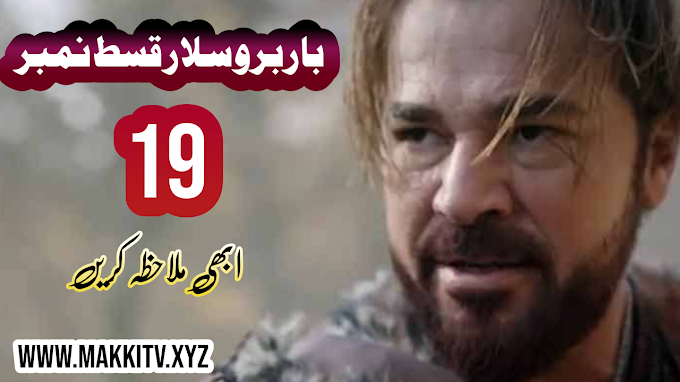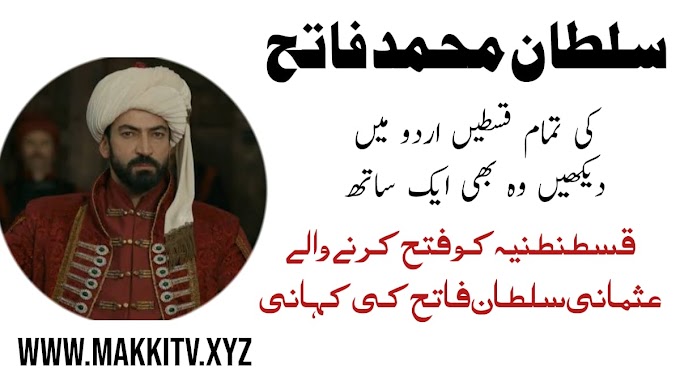30 Facts About The Vikings || Pak Turk Media Forum
All About The Vikings Han
1. Who are Vikings?
They are the northern communities of Scandinavian origin that invaded and plundered especially the seaside settlements of Europe in the Middle Ages.
2. What does the word Viking mean?
There are many different opinions about the origin and meaning of the word. "The pirate hiding in the gulf", "the camper", "piracy" or those who claim to have a meaning such as "piracy" There are also those who claim that this name comes from a region in Norway. These communities are known by different nations "Dan, Norse, Northern, Nordmanni, Ascomanni, It was also expressed as "El-Madju, Rhos, Varangoi, Gaill, Lochlannach".
3. What is the Viking homeland?
 |
| 30 Facts About The Vikings |
The homeland of the Vikings is Scandinavia. These communities, which are Norwegian, Swedish and Danish, are often divided into different groups within themselves, but Europeans generally refer to them as "Viking".
4. When did the Vikings take the stage of history?
Vikings, who have lived in Scandinavia for centuries, met the rest of Europeans in 789. Warriors in three ships from the north according to an Anglo-Saxon Chronicle, He killed King Beorhtric's steward. This is the first recorded information about them.
5. How and when did the Viking Invasion begin?
The first known Northern invasion that started in the 8th century was made in 793 to the monastery on the island of Lindisfarne in Britain. The reason for the northern raids, The population explosion in Scandinavia in the 7th and 8th centuries, the burgeoning western European maritime trade opening the door to a new economic activity through piracy and most importantly, the level of development of the Vikings in shipbuilding. These vehicles, the basis of the Viking invasion, allowed the Northerners to go far from their homes and loot. and allowed him to colonize these regions.
6. What time periods does the Viking Age cover?
It covers between the 8th and 11th centuries.
7. What is the Saga?
Viking epics are called saga. These works are the source for many details about the northerners.
8. How far has the Viking Invasion extended?
As seen on the map, the Vikings reached everywhere their ships could reach and plundered. or have established commercial relationships with communities here.
9. Are the Vikings just a barbarian people who plunder?
Most Vikings were essentially farmers, fishermen, merchants, craftsmen, blacksmiths, or carpenters. On the other hand, many of them have also managed to live a life that can exist in both ways by going overseas at appropriate times.
10. Vikings eat and drink?
They ate two meals, morning and evening. They ate bread, porridge, oatmeal, milk, cold cuts and fruit in the morning. The main meal was considered dinner. When everyone finished their daily work and gathered at home, the meal would be richer than in the morning. Sausage, egg, fish, milk, meat, onion for dinner of a wealthy farmer. Mushrooms, cheese, apples, nuts, strawberries, blackberries and honey were found. Pork, beef, sheep, venison, and poultry were eaten boiled or fried. Foods; It was seasoned with wild leeks, garlic, horseradish and similar herbs. They would obtain their salt by evaporating the sea water. They used to drink milk alongside beef or mutton. Their favorite drink was beer brewed from barley and hops. They served beer in wooden mugs or decorative spirits horns. The nobles would have consumed the same drink from silver or glass containers.
11. What would the Vikings believe in?
Vikings were a pagan community who believed in ancient Norse gods. Generally to his gods in ancient regions; They worshiped in sacred groves and islands. They regularly sacrificed crops, animals, and even humans. They called the world Midgard to the world they lived in and believed that they lived there under the protection of the gods. This mythological deity community believed to live in Asgard, the castle of the gods, was called the Aesir. and the most important of all was Odin, the "Father of Everything."
12. How do Vikings live in houses?
They were scratching in long rectangular wooden houses designed in an average of 50 meters by 5 meters. Although the sizes of these structures changed, their roofs would be covered with grass. There were no specially divided rooms in the houses. At the same time, there were usually no windows in the houses in order to avoid heat loss. The main light and heat source of the shelters were the stoves installed in the middle of the house.
13. What is the place of women in the Vikings in society?
The woman was almost in the same status as the man. He had the right to marry, divorce, acquire property, and leave an inheritance. When their husbands go to sea raids, women who are left to house management and house protection, He would not hesitate to use violence. Women whose occupations include clothing making, spinning, brewing and food preparation It is known that he participated in trade raids, albeit rarely, and led free soldiers by fighting.
14. What do Vikings do when they can't get along?
They would solve problems among themselves and local affairs in public gathering places called "Thing". The Thingsler, the local open air assemblies, met at least twice a year. Every free farmer had the right to participate in this assembly. Women could join the thinge, but they wouldn't vote.
15. What kind of hierarchy is there in Viking society?
The kings at the top of the hierarchical pyramid, the large landowners known as Jarl, who formed the aristocratic class beneath him, Bondis, who form the largest audience under it and at the bottom were slaves, who were regarded as equivalent to animals.
16. What is Jarl?
Forming a small but powerful aristocracy, the Jarls were local lords with large lands and income. The inhabitants of these lords elected him as their leader, both spiritual and military. Jarl's task was to protect the farmers living in his land. In return, he received economic and military support from these farmers in his own problems. This ruling class also provided the funds for the construction of Viking sailboats.
17. What is Bondi?
The ring of free land who formed the backbone of Viking society was called the Bondi. They live freely, engage in agriculture and trade, fight for their king and Jarls, whom they believe. They could join the "thing", gather around a leader and go on a sea plunder. The Bondi were particularly fond of their pride and therefore, feuds between clans could begin even with the slightest incitement.
18. Who are the leaders of the Viking raids?
When the Vikings organized the first raids on the coasts of Europe, these raids were organized by middle-ranking warriors called Hersir. A "Herzegovina" was typically an independent landowner or local tribal leader.
19. When the Vikings invade a place, where do they attack first and where they plunder?
When the Vikings dock their ships on the beach where they will attack, their first target is the unfailing monasteries. Because they knew that the most valuable goods were here.
20. Is Viking society aggressive?
Lack of central authority, lack of a religious system to prevent them from violence; it has led individuals, tribes, and clans to institutionalize violence. Violence was part of the daily life of the northerners and Vikings would resort to unbridled violence in their attempts to invade. This would have dire consequences for invaded societies.
21. What weapons would the Vikings use when fighting?
Long, straight, double-edged swords; Frequently preferred spears because of their low cost, Scandinavian-style ornate axes are among the main weapons of the Vikings. These warriors used to use knitted chain armor, although samples do not reach today. And not horned helmets on their heads like in cartoons or old movies, Occasionally they used helmets as apparent with fixed visors. Although the dimensions of their shields cannot be determined exactly, they mostly use oval shields.
22. What kind of ships did the Vikings use?
The most important symbol that comes to mind when talking about the Viking Age is the Viking sailing ship. The important part of this great success of the northerners is these floating dragons. Scandinavians, who see the sea as their homeland, have been intertwined with the sea for centuries and competition between them led them to flourish in shipbuilding. Many features of these robust, light and fast ships, which are far above the Mediterranean ships of their age as engineering, enabled them to float in all kinds of water. These ships are classified according to their intended use and number of oars; There are many types such as sexareingr, karvi, snekkja, skei, drekar. Special names were also given to these unique ships, which could hold a maximum of 70-80 warriors. Rowing Horse, Surf Dragon, Golden Horn Deer, Ocean Crossing, Big Snake are examples of these.
23. How do Vikings fight?
Northerners are always ready for war due to their frequent quarrels and hunting traditions. The main naval battle tactic of the northerners experienced in naval warfare was to drive their ships on the opponent and board them. First, they shoot arrows from a distance, and when they approached, this rain was continued with spears and stones. When asked closely, the warriors would bring the shields to the level of their heads and form a set. When the ship was contacted, they would jump on the opponent. In large sea battles, they join ships side by side or from their prow in a wedge shape. and they would form a platform on the water surface and have the opportunity to fight on the sea as on land. The Vikings' favorite formation in ground battles was the skjaldborg, or shield wall. This series was an in-depth phalanx of many lines, with better equipped men forming the front lines. In addition, the Vikings also used the pig sequence learned from the Romans.
24. What is Berserker?
He had extraordinary powers attributed to Odin, that he was as strong as a bear, that iron and fire did not penetrate him, It is the name given to Viking warriors who are believed to defeat their enemy with one move. Where these warriors fought in a madman wearing wolf skin and they are believed to be out of control to the point of biting their shields. In fact, there is an idiom in English such as “going berserk” which means getting extremely angry and going crazy.
25. What is / where is Valhala?
Scandinavians in the "Hall of the Murdered", where brave warriors killed are waiting for Odin that is, they believe they will be resurrected in Valhala. Later, those who deserve to enter here will have the honor of fighting shoulder to shoulder with Odin in the apocalyptic Ragnarok. Believing in this, Viking warriors are not afraid of death and war in order to join Odin's army. they fought without fear in the squares.
26. What types of banners and flags would the Vikings use in wars?
The most common symbol used by the Vikings, carrying banners to frighten their opponents, was undoubtedly the "raven". It was believed that the Vikings would triumph if a raven flapped its wings.
27. How would the Vikings defend their city and town?
Vikings protected their cities and towns with wooden and ring-shaped fortification systems called Trelleborg style.
28. Was it actually the Vikings who discovered America first?
Yes, centuries before Christopher Columbus, the Vikings discovered the new continent. Northerners who settled in Iceland since the 870s, He discovered Greenland by chance through Erik the Red in the 980's and established two colonies here. Then Erik's son Leif Erikson reached today's Canadian beaches in the early 1000s. He named the place where he tried to establish a colony "Vinland". But the rest of humanity remained unaware of this semi-legendary discovery of the Vikings, except for a handful of Vikings.
29. What is the secret of the Viking script in Hagia Sophia?
On the marble parapet of the balcony on the upper floor of Hagia Sophia, there is an inscription engraved in runic letters "Halvdan was here". It is thought that a warrior who came to Istanbul as a mercenary in the Viking age had engraved this article.
30. How real are the characters in the History Channel's Viking series?
The main character of the series, Ragnar, is a semi-legendary semi-real character set in the Viking sagas. Characters such as his sons Bjorn, Ivar, Sigurd, Ubbe are also former Viking rulers. According to some, although they do not have blood ties with Ragnar, they have shown themselves to be linked to Ragnar. 31. How did the Viking Age end? In the 11th century, kings in Scandinavia got stronger and increased their central authority and the Viking Age ended with the spread of Christianity in this region. Hope you like and share the video for similar productions… ..

















0 Comments
Thanks For Makki Tv Website Visit Please Contect My Whatsapp Number For Updates 03155017246